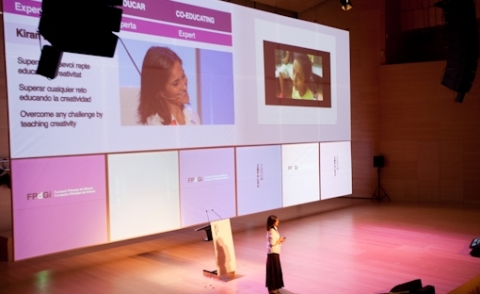Four very simple things are encouraged in children: to feel, imagine, do and share. The steps in Design for Change are:
- Children should know their surroundings and be aware of what is happening around them.
2. Children can have ideas and make proposals.
3. Children should have the confidence to design and act to bring about a more desirable and sustainable future for their environment.
Children therefore feel excited and involved and committed to their lives and those of their community. They become young people who do well and do good.
You cannot change someone without first changing yourself. Take Project Heal cancer patients for example: children were asked to go to hospital and accompany the sick. This does not mean going there just one day and holding their hand, but is rather a 5-year journey. Changing the world starts with feeling, and having feelings for others. Then comes academic success in mathematics, and English, etc.
The idea is that if the city gives something to children, they give something back to the city. A project involves taking over the city’s streets and creating a friendly and inclusive city for all children.
The aim of education is simple: to make a better life than there is today. This does not happen by chance, but is done by design, design for change.







